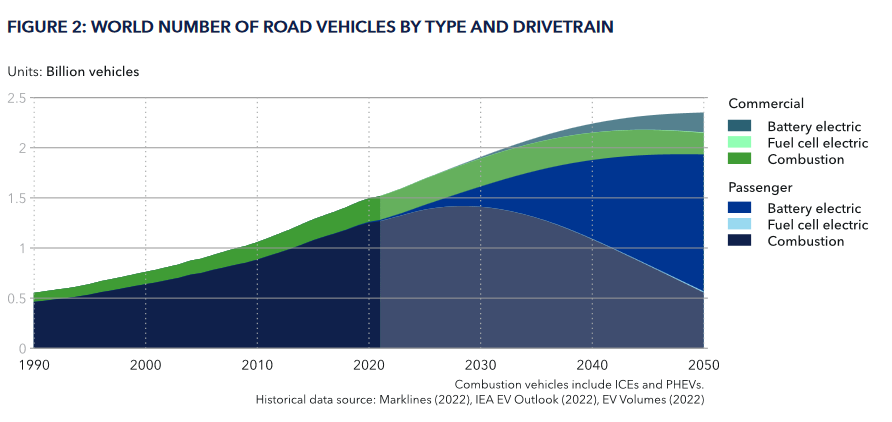Transport’s share of overall emissions will grow from 25 per cent today to 30 per cent by 2050. Currently, transport of passengers and goods accounts for about a fourth of global energy-related CO2 emissions, and 37 per cent of global CO2 emissions from all end-use sectors. It is the sector with the highest dependence on fossil fuels, with more than 90 per cent of its energy stemming from crude oil.
Overall, transport emissions will reduce by some 39 per cent by mid-century, but by then the relative contribution of transport to global emissions will have risen to one third, unless current trends change.
Despite the rise in electric road transport, of which 78 per cent will be electric by 2050, some of these gains will be offset by a doubling of the number of road vehicles, from 1.2 billion to 2 billion, a 130 per cent growth in airline passenger trips, and a 35 per cent growth in shipping.
The figures come from DNV’s Energy Transition Outlook 2023, Transport in Transition. The report notes that global GDP will more than double by 2050, with much of that value creation facilitated by growing volumes and increased efficiencies in the transportation of freight and people. Therefore, attempts to reduce emissions in transport will require an effort to ‘get ahead of the curve’ rather than be reactive.
Hitherto, gains in energy efficiency have largely been neutralised by an expanding vehicle fleet, a steady growth in passenger flights, and an increase in the transport of freight on keel. Consequently, transport sector emissions have risen inexorably for many decades, with the singular exception of the years when COVID-19 held the world in its grip.
With exception of the passenger vehicle segment, the transport sector is moving hard to electrify. Despite significant uptake of EVs in China, Europe, and North America, synthetic e- and biofuel blending mandates for road transport and aviation, and International Maritime Organization (IMO) ambitions for low- and zero-carbon fuels in shipping, the transport sector will decarbonise far too slowly — only reducing CO2 emissions by 39 per cent by mid-century — falling severely short of the goals of the Paris Agreement.
Latest News
-
Jewellers body offers grants of up to £50,000 to boost training
-
Agency overhauls community charity’s brand for free
-
Open University launches global majority voluntary sector leadership programme
-
OVO and Co-op’s foundations help launch youth climate justice funding scheme
-
Bus firm to invest £25m in green transport research
-
Myanmar earthquake: Co-operative bank launches emergency fundraising appeal
© 2019 Perspective Publishing Privacy & Cookies









Recent Stories